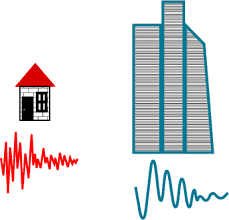In recent weeks, the earth has reminded us of its unpredictable power. In Pakistan, frequent tremors have rattled parts of Balochistan and northern regions, leaving people anxious and alert. In Myanmar, a devastating 7.7-magnitude earthquake struck near Mandalay, causing widespread destruction and tragic loss of life.
Meanwhile, in Turkey, the ground shook once again, sending waves of fear across cities still haunted by past seismic disasters. These events remind us that earthquakes are not distant possibilities but urgent realities we must prepare for.
In an era increasingly vulnerable to natural disasters, earthquakes stand among the most fearsome. They strike without warning, leaving cities shattered and lives forever altered. Yet the devastation they bring is not merely a product of nature’s fury—it is, far too often, a result of human negligence.
The single most important factor that determines whether an earthquake becomes a catastrophe or a survivable event is how well we build our homes, offices, and schools.
The core of true earthquake preparedness lies in enforcing earthquake-resilient building codes. History offers us clear proof. Japan, a country sitting atop several tectonic plates, faces frequent and severe earthquakes.
Yet because of their stringent building standards, including flexible designs and shock-absorbing foundations, they manage to minimize casualties even in major quakes. Similarly, Chile has emerged as a global model after devastating earthquakes in the past led them to adopt some of the world’s toughest construction codes.
New Zealand too has heavily invested in resilient infrastructure, saving countless lives. In contrast, countries where building regulations are outdated or poorly enforced, such as Haiti or parts of Turkey, have witnessed heartbreaking destruction.
Buildings that are designed to withstand seismic shocks do more than just stand tall—they protect everything and everyone inside. Retrofitting older structures to meet modern safety standards is critical, but expensive.
For poorer countries, cost-effective solutions like using reinforced concrete, flexible steel joints, and lightweight roofing materials can make a life-saving difference without overwhelming budgets. Encouraging local construction industries to adopt simple seismic design principles can save thousands of lives with relatively small investments.
However, safe buildings alone are not enough. Earthquake preparedness must extend to community behavior. Emergency drills teach people how to react swiftly and correctly during shaking—whether to “drop, cover, and hold on” or to evacuate safely.
Countries like Japan conduct regular national drills, ensuring that even schoolchildren instinctively know what to do when the earth trembles.
Emergency kits are another vital line of defense. Stocking basic necessities like water, first-aid supplies, flashlights, and communication tools can mean survival in the chaotic hours following a major quake.
Preparedness at the individual and family level empowers communities to be resilient even when government aid is delayed.
Technological advancements also offer important safety nets. Early warning systems like Japan’s J-Alert or Mexico’s SASMEX have saved countless lives by providing citizens a few precious seconds to seek safety.
Sirens, mobile alerts, and public address systems form an integrated web of awareness that makes a crucial difference when every second counts.
The road to earthquake resilience is not paved by fear, but by foresight. Nations that treat earthquakes as inevitable and prepare accordingly succeed in saving lives and reducing suffering.
Poorer nations may not afford luxurious infrastructure, but they can implement practical, budget-conscious measures that prioritize life above aesthetics.
Ultimately, the ground will shake—it is a fact of life in many parts of the world. But whether cities crumble or stand proud afterward is entirely within human control.
Investing in resilient buildings, practicing emergency drills, preparing essential supplies, and adopting early alert systems are not optional luxuries; they are necessities for survival. When the earth trembles, let preparedness—not panic—be our response.
📍 English Language Educator | Blogger & Content Strategist | 7+ Years in Educational Blogging
Nosheen Bashir is a dedicated English teacher and experienced blogger with over seven years of expertise in content creation and educational writing. Passionate about language, literature, and effective communication, she combines her teaching experience with blogging skills to create insightful, research-backed content that helps learners and educators alike.
🔹 Expertise & Achievements:
✔ English Language Education: A skilled educator with years of experience in teaching English grammar, literature, and communication skills to students of varying levels.
✔ Educational Blogging: Running a successful blog for 7+ years, delivering well-structured, engaging content on language learning, writing techniques, and academic success.
✔ SEO & Content Strategy: Specializes in creating high-ranking, authoritative articles that follow Google’s EEAT principles, ensuring content that is both informative and search-friendly.
✔ Student-Centric Approach: Committed to making English easier, engaging, and accessible, helping readers and students improve their language proficiency.
🚀 With a passion for teaching and writing, Nosheen Bashir is dedicated to crafting educational content that empowers students, teachers, and language enthusiasts worldwide.








